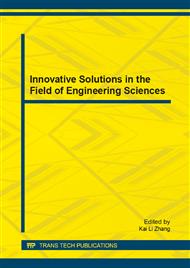p.181
p.187
p.192
p.197
p.202
p.207
p.211
p.216
p.220
Effects of Cu-Zn-Ni Electrode during EDM of SUS 304 Material
Abstract:
In this study, experiments were performed to study the effects of electrode materials mixed with nickel in electrical discharge machining (EDM) of SUS 304 material. Experiments were constructed using parameters consisting of pulse-on time, pulse-off time, discharge current and electrode polarity, respectively. The analysis of structural features of the surface was accomplished using a scanning electron microscope (SEM) as well as an element analysis created on the surface, after the EDM process, by using Energy-dispersive x-ray spectroscopy (EDS). The results of the experiments found that nickel elements in the electrode material have an effect on the working performance of material removal rate and electrode wear ratio. The electrode wear ratio reduces when nickel elements increase. Moreover, the surface roughness had the lowest level at electrode 15 % nickel element. Thus, electrode wear during the EDM process of nickel element from electrodes and other elements, combined with surface metalworking, becomes a recast layer of nickel.
Info:
Periodical:
Pages:
202-206
Citation:
Online since:
June 2014
Authors:
Price:
Сopyright:
© 2014 Trans Tech Publications Ltd. All Rights Reserved
Share:
Citation:


